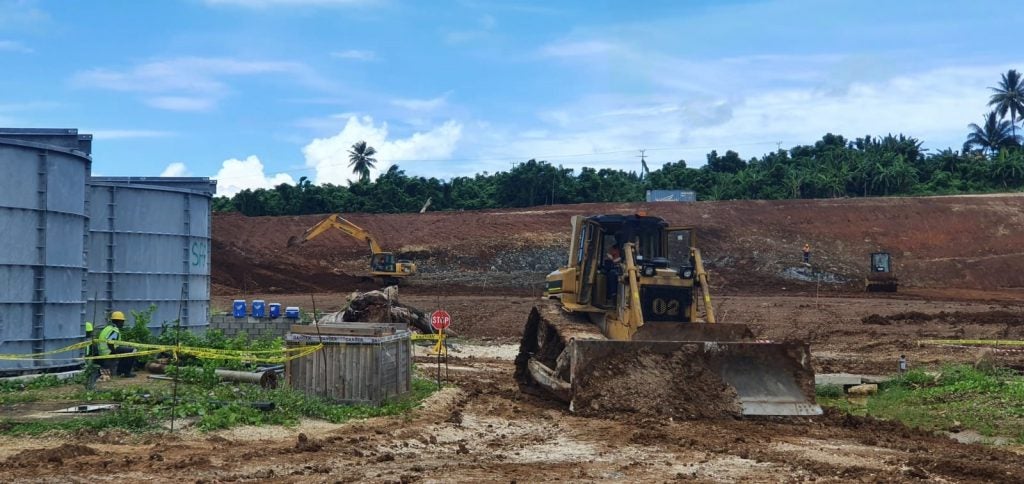Australia’s Defence Infrastructure in the Pacific: An Overview
Much has been made in recent years about fears of a supposed Chinese military base emerging in the South Pacific, on Australia’s backdoor. From Kiribati to Vanuatu, unsubstantiated reports of the Chinese People’s Liberation Army (PLA) getting ready to move in and set up a base have been a semi-regular topic of discussion in the Western media. While China does have legitimate strategic interests in the region as a growing power, they have not yet progressed to the point of an actual base being established.
There is, however, one nation in the region that has been doing this largely uncommented upon, Australia. While it hasn’t been grabbing headlines or constructing airstrips, in recent years it’s been engaging in a defence construction splurge across the region. Since 2018, Australia has been developing and expanding its presence in the region. It has been building a multitude of facilities and enabling capabilities across the region, including wharves, training camps, coordination centres and much more. This article doesn’t comment on the veracity of hypothetical Chinese bases, rather, it seeks to explore what a different country has been creating in the region.
Australia’s defence engagement with the region has evolved since World War Two. Post World War Two, Australia’s posture was rooted in colonialism and its continued stewardship of Papua New Guinea (PNG). Today, the Australian government characterises its policy as a partnership with its “Pacific Family” to build a region “that is secure strategically, stable economically and sovereign politically” as part of its “Pacific Step up”, announced in 2018. However, to some observers, Australia’s posture is seen as a form of Neo-colonialism in which it attempts to maintain a sphere of influence in the region.
Today, the Department of Defence’s involvement with the region primarily comes under the auspices of the Pacific Maritime Security Program. As part of the program, Australia is donating 21 patrol boats to 13 Pacific nations, as well as training their crews and developing local infrastructure to support the continued operation of the vessels. In addition to the Maritime Security Program, Australia is also in the process of constructing several flagship infrastructure projects across the region.
Australia’s more substantial projects in the neighbourhood are focused within Melanesia, a subregion of the Pacific in which Australia has traditionally wielded more influence due to colonial ties and its allocation of resources. All of Australia’s landmark projects are situated within the countries of this region, which include PNG, Vanuatu, Fiji and the Solomon Islands.
In Fiji, one of the few Pacific states to have a formal military, Australia’s Defence infrastructure projects have mainly been aimed at developing and maturing the country’s capabilities in disaster relief, peacekeeping, and maritime security. In 2018, Australia secured rights to fund the upgrade of the Blackrock Training Camp in a competition with China. Unlike China, Australia reportedly offered a “holistic” approach to the project. Since then, Australia has continued to develop the facility, as it moves towards a 2021 completion date.
Australia is also scheduled to soon begin construction on a Maritime Essential Services Centre (MESC) that will function as the headquarters for Fiji’s Navy and Search and Rescue service, helping to “facilitate maritime security coordination” in the region and beyond. Australian projects in Fiji are primarily being constructed by Australian Defence Force (ADF) personnel in conjunction with local contractors, and partner agencies. Australia has gone to great lengths to stress the positive economic impact that they expect the projects to have on the local economy, mainly by the use of local labour and material. This is part of Canberra’s framing of the projects as assistance to its so-called Pacific family.
In PNG, Australia has likewise emphasized the economic benefits of its Defence infrastructure programs, most notably the joint initiative at Lombrum Naval Base. The initiative seeks to redevelop the base, which is located on PNG’s Manus Island, to enhance PNG’s ability to protect its borders and maritime resources. Prominent Australian commentators, like Anthony Bergin, however, have called for Australia to establish a permanent presence at the base which Australian forces are expected to visit regularly. A Defence factsheet released about the base touts that “350 local jobs will be created” and “$41 million USD” injected into the local economy as a result of the works. However, some locals have alleged that the Australian contractor, Clough, has failed to follow up on these commitments to leverage local contractors. The exact contracting arrangements on the ground are relatively opaque, however, given Canberra’s insistence that these projects are being undertaken for the benefit of the locals, these claims must be investigated.
Further South, in the Solomon Islands, Australia has broken ground on a new Patrol boat base and Border Outpost. Located near the country’s border with PNG. The outpost will allow Australian donated patrol vessels to dock and replenish, and according to the Department of Defence enhance the country’s ability to control its borders by enabling maritime security operations.
In Vanuatu, Australia is preparing to upgrade two of the police force’s barracks facilities. These upgrades are wide-ranging, consisting of new medical and vehicle facilities, as well as enhanced magazines and armouries for firearms. Once again, according to the Australian Department of Defence, local industry involvement will be prioritized, with the Department advertising that 200 local jobs and $40 million USD will be injected into the country’s economy.
A few common themes can be drawn about Australia’s Defence engagement in the region. Australia places a significant emphasis on local industrial and economic participation in its projects, at least from a public relations point of view. Because of the nature of the Pacific’s security challenges, Australia’s infrastructure projects have focused on enabling low-end capabilities such as maritime security and disaster relief capabilities. In contrast, China has reportedly been considering constructing high-end defense capabilities in the region. Australia’s Defence infrastructure program marks a major and unique outside presence in the region, one that is worthy of understanding.
Cover Image Courtesy Commonwealth of Australia.

